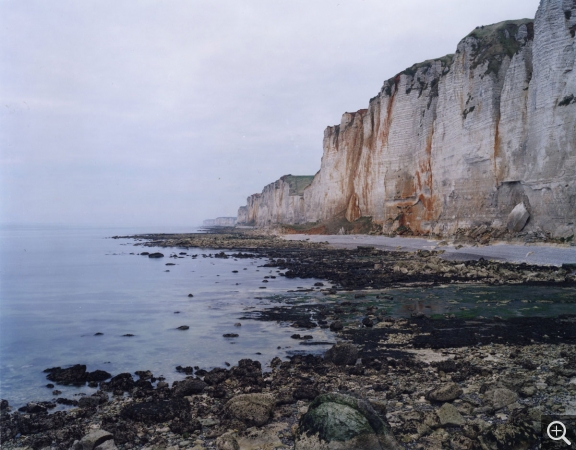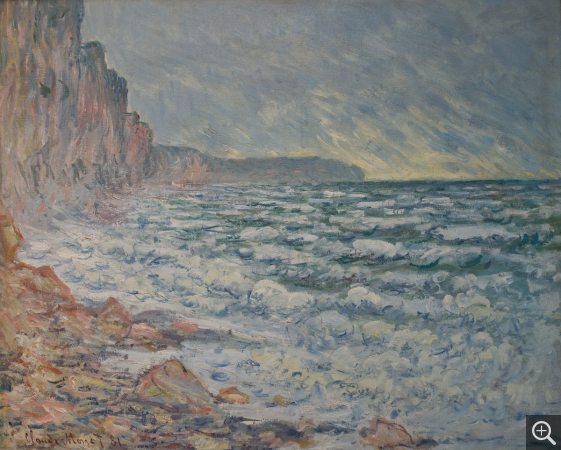Southam, The Rockefalls of Normandy
Jem Southam lives in the city of Exeter in Devon, England. Since 1981, he has produced six major series of landscape photographs, including one on cliffs. As an echo to this work in England, the Pôle Image Haute-Normandie invited him to add a French component to the project. Between 2004 and 2007, Jem Southam made several trips to the Pays de Caux coast, exploring the pebble beaches of the region (Bénouville, Sotteville-sur-mer, Petites Dalles, Saint-Pierre-en-Port, etc.) as the Impressionists did before him. The two photographs acquired by MuMa, Vaucottes and Senneville-sur-Fécamp (2007), are part of the series entitled "The Rockefalls of Normandy".
Jem Southam is fascinated by the idea that nearly 500,000 years of erosion of a large chalk plateau connecting England and France resulted in the formation of the Channel cliffs at the same time as the appearance of Homo sapiens. His work shows in a way that the cliffs at their own level are constantly, inexorably shifting with the rise and fall of the tides and the changing seasons. Jem Southam focuses on cliff slides, gully erosion, the different shapes and colours of geological accidents, everything in this distinctive landscape that transforms the chalky rock faces into towering vestiges. Southam's style, verging on documentary, pays critical attention to the changing landscape, the sculptures of geology, and the natural ruins formed by erosion and weathering. Carefully approaching the sites with a vision that is archeological yet sensitive, his images reflect the concerns of land artists when the imprints and marks left on the landscape lead to a reflection on time, nature and the environment.
At MuMa, these two photographs resonate with the painting that Monet produced in 1881, Fécamp Seashore. But rather than focus on the minerality of the site, the painter strove to render the movement of the waves, in short, tight rolls relentlessly striking the cliff face, which receives little treatment in itself. There where Monet is drawn to the energy of the elements recreated with rapid brushstrokes, Southam silently captures the slow-moving time.
Jem Southam is fascinated by the idea that nearly 500,000 years of erosion of a large chalk plateau connecting England and France resulted in the formation of the Channel cliffs at the same time as the appearance of Homo sapiens. His work shows in a way that the cliffs at their own level are constantly, inexorably shifting with the rise and fall of the tides and the changing seasons. Jem Southam focuses on cliff slides, gully erosion, the different shapes and colours of geological accidents, everything in this distinctive landscape that transforms the chalky rock faces into towering vestiges. Southam's style, verging on documentary, pays critical attention to the changing landscape, the sculptures of geology, and the natural ruins formed by erosion and weathering. Carefully approaching the sites with a vision that is archeological yet sensitive, his images reflect the concerns of land artists when the imprints and marks left on the landscape lead to a reflection on time, nature and the environment.
At MuMa, these two photographs resonate with the painting that Monet produced in 1881, Fécamp Seashore. But rather than focus on the minerality of the site, the painter strove to render the movement of the waves, in short, tight rolls relentlessly striking the cliff face, which receives little treatment in itself. There where Monet is drawn to the energy of the elements recreated with rapid brushstrokes, Southam silently captures the slow-moving time.






